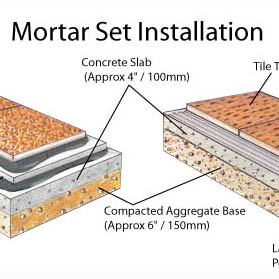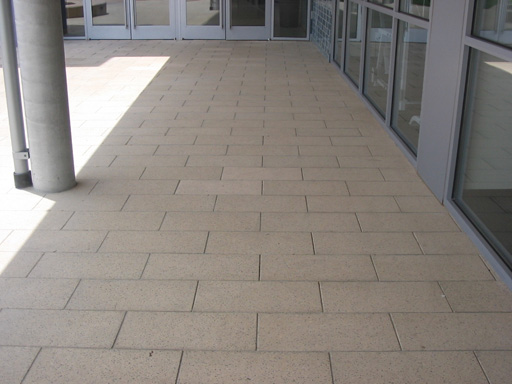Introduction to Interlocking Pavers
The concept of interlocking pavers dates back
over 2000 years ago to the Roman Empire. The Romans developed
a simple system for building roads, some of the roads are still
in use today.
The roads were constructed with a well compacted base of
lime and gravel, covered with a tight fitting cut stone, which
produced an excellent and economical roadway that remained
virtually maintenance free in all types of weather.
The modern
version, interlocking concrete pavers, is manufactured in a variety
of patterns to add vitality to any environment.
- Interlocking pavers create style, colour and eye-catching patterns
while providing a durable and long-lasting surface.
- Make a superior integrated system for residential and
commercial vehicular requirements.
- When properly installed require practically no maintenance.
- Do not require expansion joints.
- Resistant to spilled fuel and oil.
- May be used immediately upon completion of installation.
- May be disassembled to repair subgrade or underground
services then reinstalled with no unsightly patch.
- Skid and slip resistant surface.
- Cooler surface.
- Easy
to work to grade transitions.
- Long
design life.
- Low
life cycle costs.
- Interlocking
concrete pavers do not crack like asphalt or poured-in-place concrete
or stamped concrete. Flex without cracking.
- Easy
to repair and/or replace. Asphalt, concrete, and stamped concrete
can't make this claim.
- Resist
deterioration from freeze-unfreeze cycles and de-icing salts better
than asphalt and better than ordinary poured-in-place concrete.
- Concrete
pavers come in many shapes and colors. Virtually unlimited combination
of solid and blended colors, shapes and laying patterns.
- Paving
stones should last over 30 years, which is much longer than alternative
pavements, under normal residential use.
What Are Interlocking
Pavers?
 |
“The definition of ‘interlock’ is: to connect
so that motion of any part is constrained by
another”.
Interlocking pavers are most commonly made
from cement or concrete, and tend to simulate
the effects of cobblestone pathways.
This special interlocking feature enables
pavers to be easily installed without the use of
mortar. Interlocking
pavers | have the
advantage of being an easy self-installation
paving material for the homeowner or contractor.
Interlocking pavers connect together through
the use of sand, and can cover any patio,
decking, driveway or walkway. Virtually any
application that bricks or concrete would be
used for, interlocking pavers is another
alternative.
| Interlocking pavers are available in many
colors and designs. They are modular, meaning
that they connect together to form a variety of
geometric designs. |
|
Proper Installation of Interlocking Concrete
Pavers
 |
When installed properly, the combination of
the pavers, bedding sand, edge restraint and
joint sand causes them to bind, allowing the
paver units to become a unified whole.
Interlocking paver blocks have the ability to
transfer loads and
| stresses laterally
by means of an arching of bridging between
units, spreading the load over a large area,
reduces the stress thereby allowing heavier
loads and traffic over sub-bases which normally
would require heavily reinforced concrete.
|